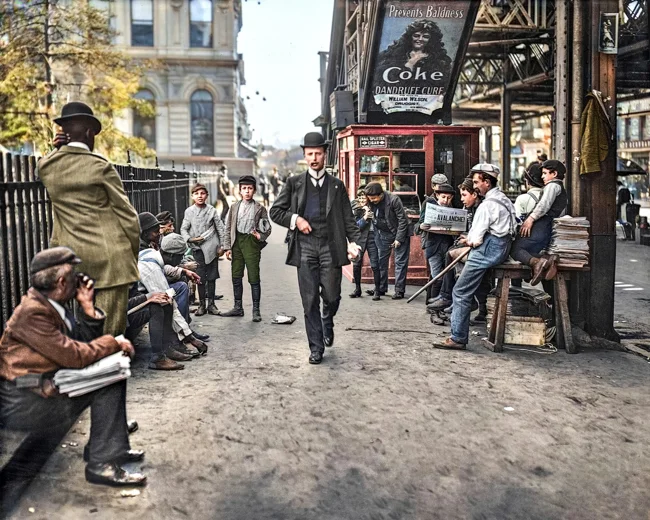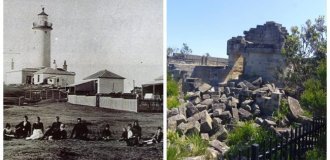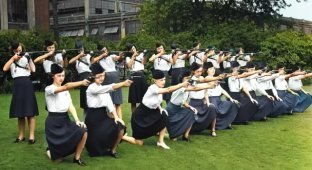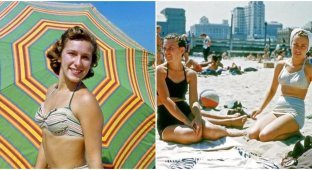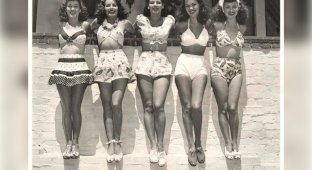A selection of interesting and unusual photos from the USA (21 photos)
Let's take a look at how Americans lived in different decades of the 20th century. 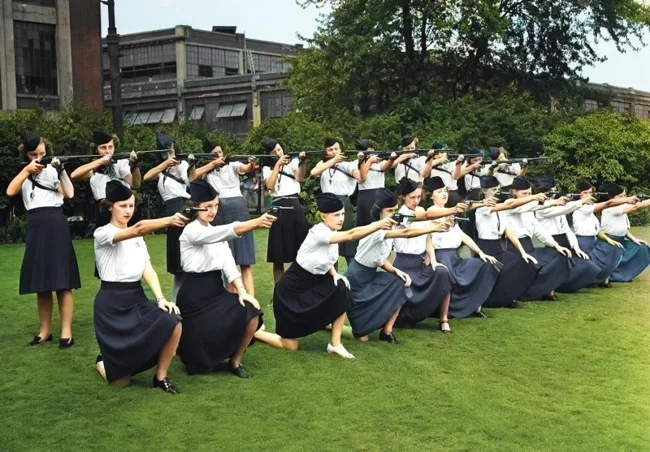
Portrait of an immigrant woman posing next to a stove with her child in a slum tenement, New York City, 1911. 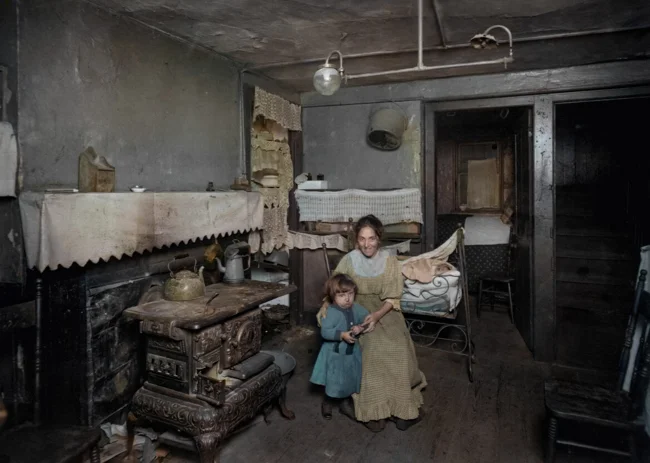
Two bathers are detained for wearing too-short bathing suits by a female beach police officer in Chicago, Illinois, in 1922.
At the turn of the 1920s, women began to actively change their style of clothing, including bathing suits, making them more practical and revealing. However, conservative society continued to resist: many believed that revealing bathing suits violated moral standards. Beach police officers, usually women, monitored the established rules - for example, that bathing suits did not rise above the knee or fit too tightly. 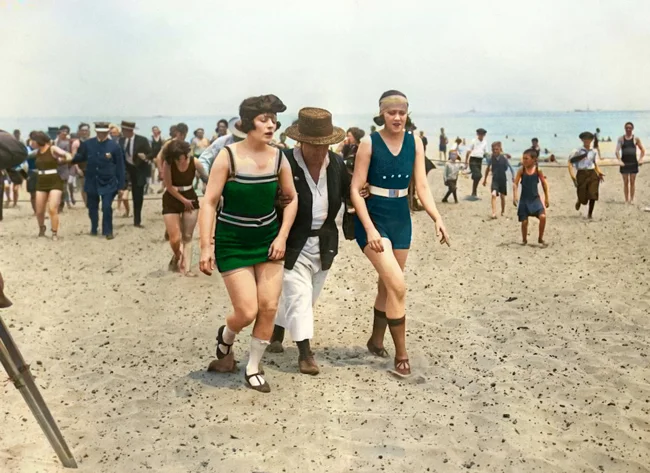
A family in search of a better life. USA, 1930s.
A family on the road between Dallas and Austin, Texas. They left their homes and former lives in South Texas, hoping to reach the Arkansas Delta to find work in the cotton fields. They have no money, not a crumb of food, and only three gallons of gas left in the car. The father is busy fixing a flat tire, with three children nearby. Despite the difficulties, he maintains a philosophical outlook on life: "It's not easy, but life is hard no matter how you look at it." 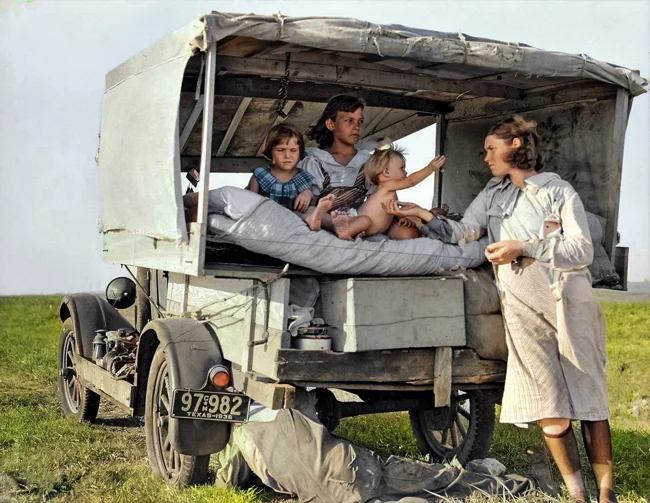
Photographer: Dorothea Lange.
Female guards at the Hudson Naval Ordnance Plant training for marksmanship. Location: Detroit, Michigan, USA, 1942. 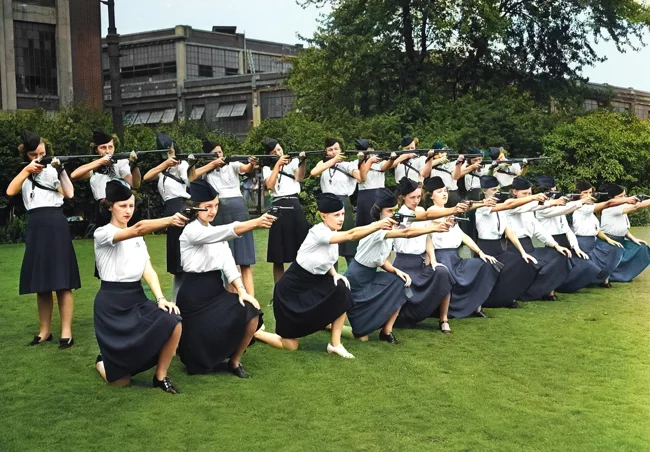
Sea baths, 1910s.
Sea baths were often portable or permanent structures designed to provide privacy while bathing. Portable baths were placed out to sea a short distance from the shore, where a person could change clothes and bathe while remaining hidden from prying eyes. After bathing, the bath was returned to shore. 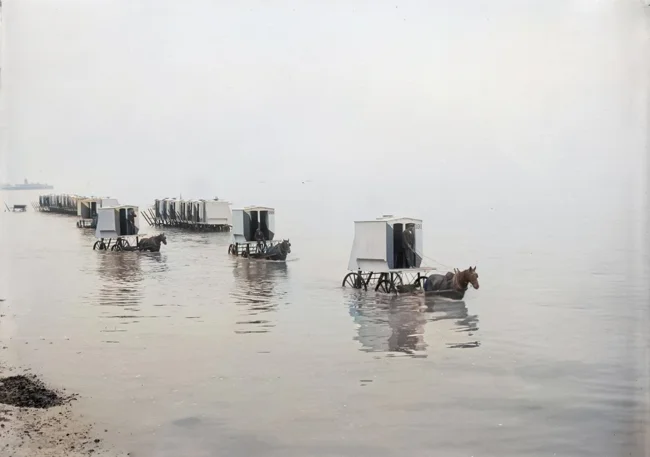
Photographer: Charles Chusseau-Flaviens
A black family on a plantation. Georgia, USA, circa 1907. 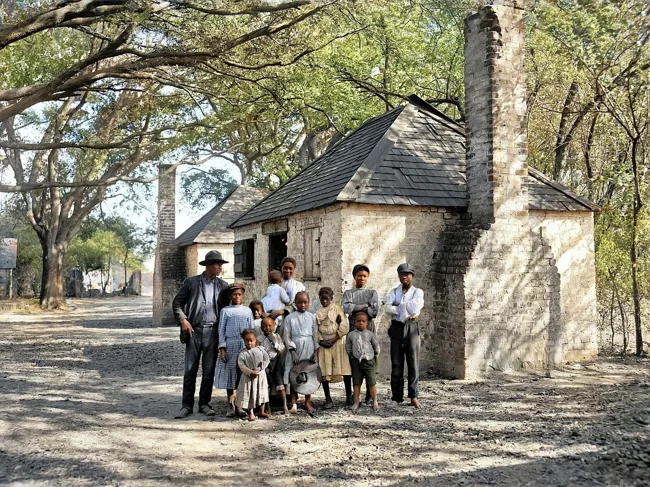
Motel owner James Brock pours hydrochloric acid into a swimming pool to drive out unwanted guests, 1964.
Motel owner James Brock became an infamous figure in 1964 when he used hydrochloric acid in his establishment's swimming pool to drive out unwanted guests. The shocking incident occurred during the height of the civil rights movement in the United States and became a symbol of racial discrimination and hatred. James Brock, who ran a motel in St. Augustine, Florida, was upset that a group of African-American and white rights activists were trying to integrate the previously white-only swimming pool. In an attempt to "defend" segregation, he took radical action by pouring acid into the water where people were. This gesture caused a wide public outcry and highlighted the tensions of the time. The incident attracted national attention and became one of the key moments demonstrating the need for the rapid adoption of the Civil Rights Act of 1964, which prohibited racial segregation in public places. James Brock was blamed for all the damage, although he only wanted to kick out people who climbed into someone else's pool without asking. And the amount of hydrochloric acid that he poured could not have caused real harm to people. 
Window washers in New York, 1958. 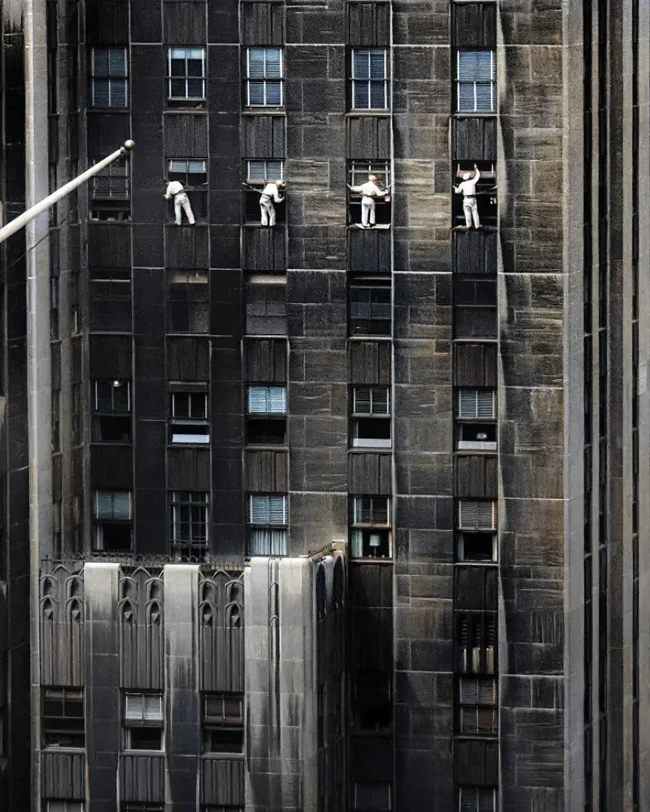
Photographer: Inge Morath
Packaging olives, 1949.
A&P - The Great Atlantic and Pacific Tea Company. American supermarket chain, the oldest supermarket chain in the world. 
Car crashes through Park Avenue barrier. New York, 1944. 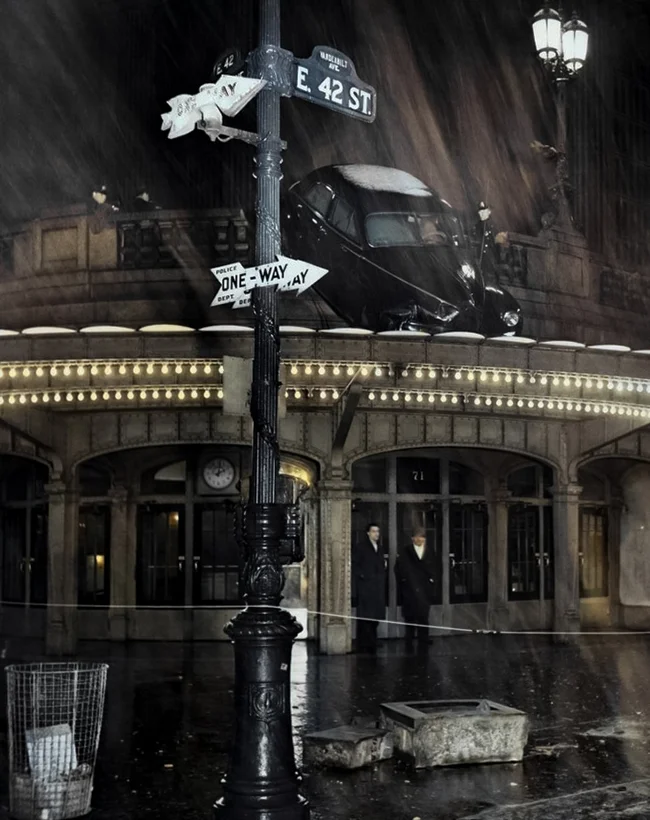
A Dornier Do X flying boat in New York, November 1930.
The Dornier Do X was a German passenger flying boat developed by Dornier. This aviation giant was one of the most ambitious and impressive designs of its time. Designed under the supervision of Claudius Dornier, the aircraft was completed in June 1929 and at the time of its creation was considered the largest, heaviest and most powerful flying boat in the world. It was equipped with 12 engines, which allowed it to carry up to 160 passengers. On October 20, 1929, the Do X set an outstanding record by carrying 169 people on board during a demonstration flight over Lake Constance. This achievement remained unsurpassed in the first half of the 20th century. However, despite its impressive characteristics, the aircraft had limited practical value due to its poor flight characteristics and economic inefficiency. The Do X made several spectacular demonstration flights, including trips to Africa, North America, and South America, but was never put into regular service. 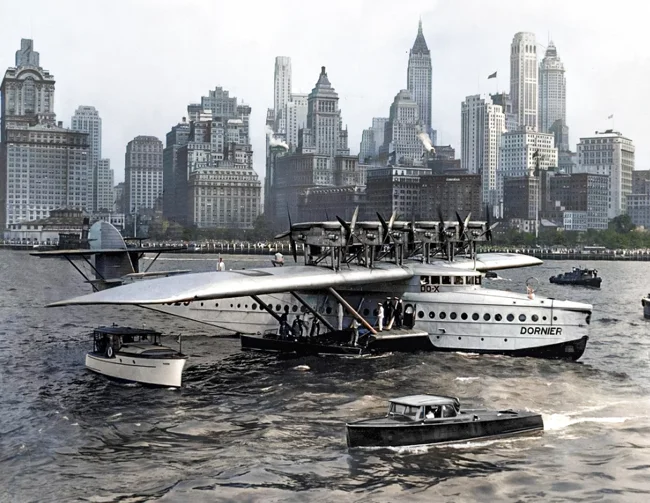
Female students doing strength training. USA, 1940s 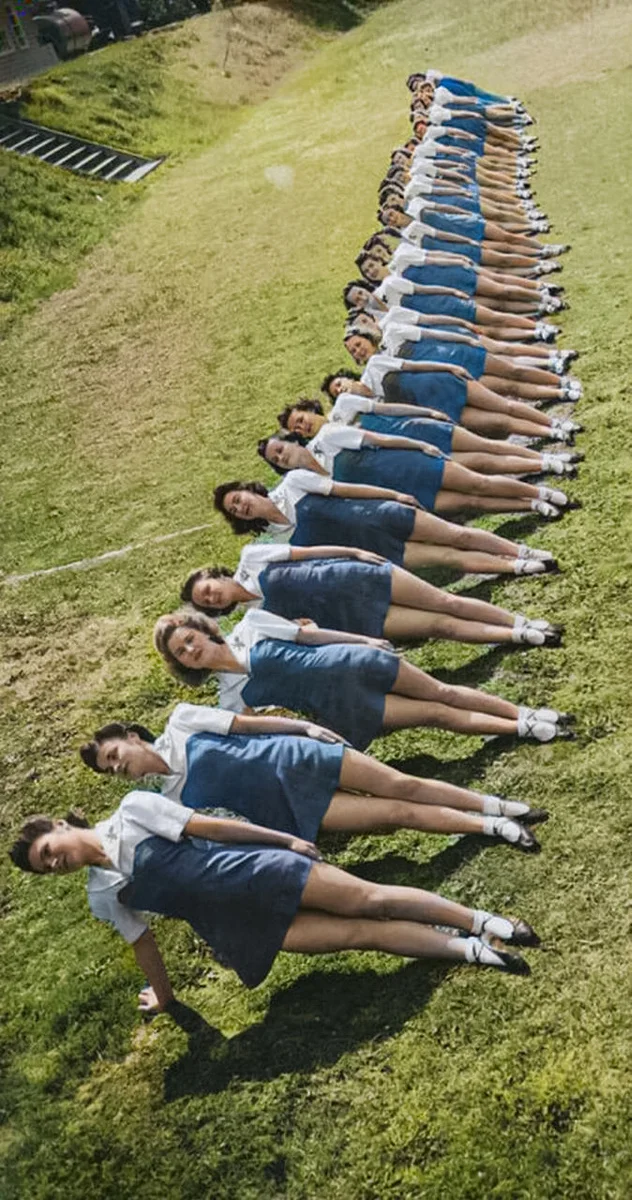
A boy and his owl, 1933. 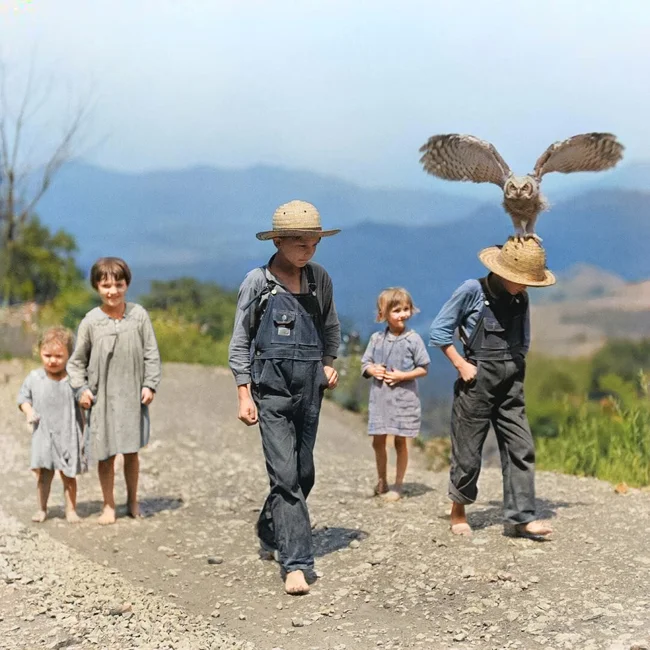
Oil rigs on a beach in California, 1920s.
At the beginning of the 20th century, huge oil reserves were discovered in California. One of the key events was the discovery of a field in the Signal Hill area in 1921. The oil boom brought huge profits to both locals and companies. Cities such as Los Angeles and Long Beach became centers of the oil industry. Hundreds of oil rigs appeared on the site of previously uninhabited plains. Signal Hill, for example, was literally dotted with drilling rigs, which created a unique "city on a hill". Thousands of people from all over the country came to California in the hope of finding work in the oil industry. This contributed to the population growth and the development of infrastructure. 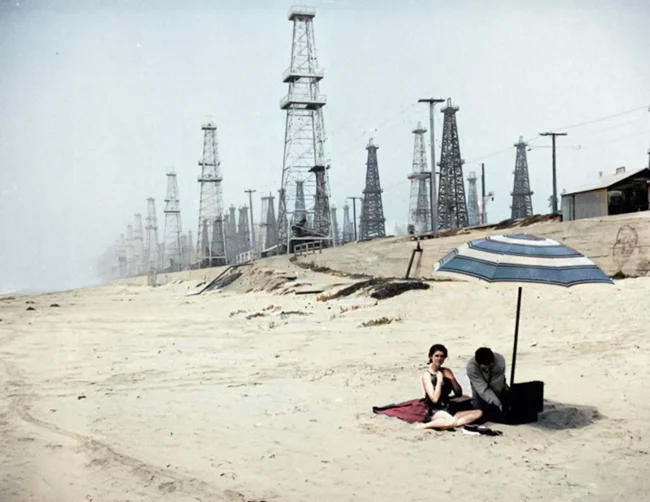
Marcia Pinkenfield, six months old, who won a very unusual contest and was chosen as the most beautiful child in America, 1927. 
Actress Joan Blondell rides a train while filming a movie, 1931. 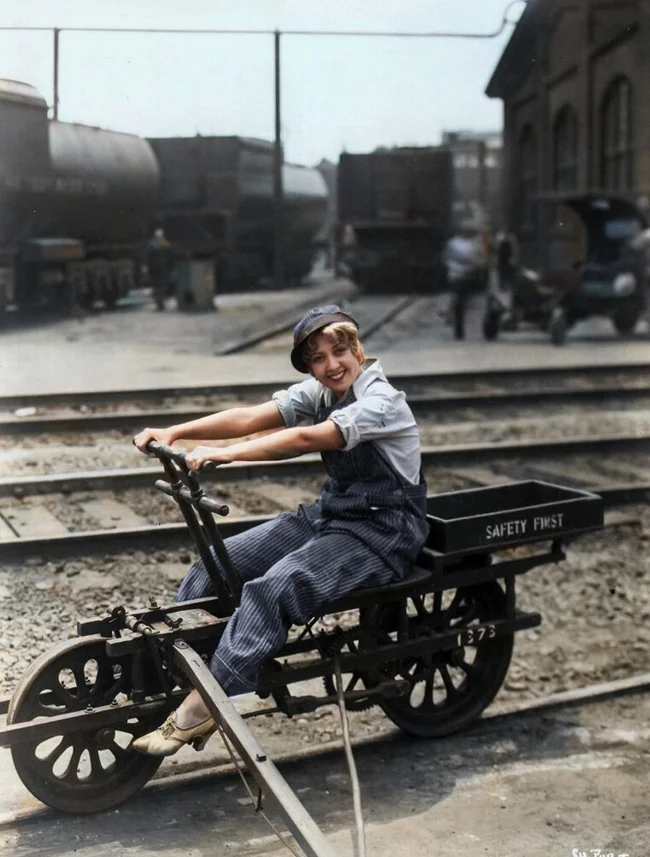
Assembling locks by hand at a factory in the USA, 1915. 
New York, 1930s. 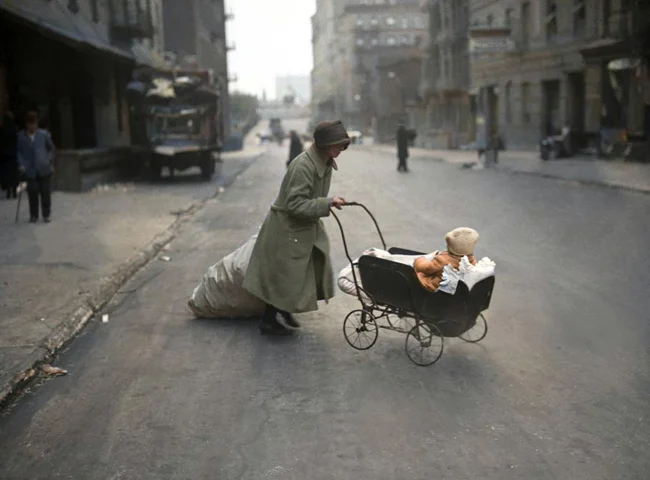
Museum workers clean the skin of an elephant for display at the American Museum of Natural History in New York City, June 1933. 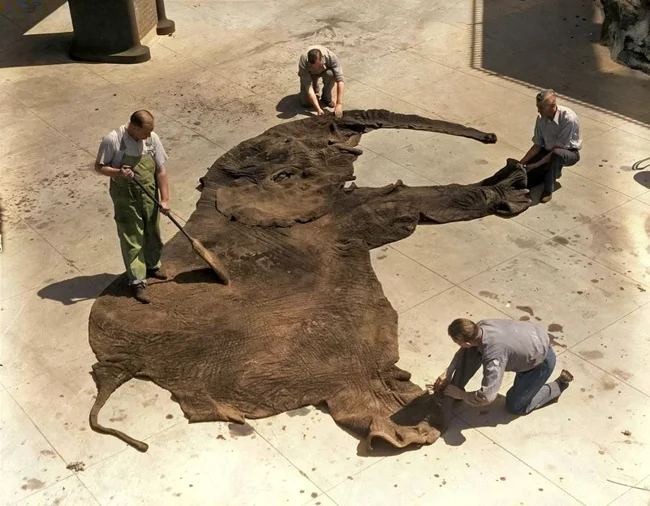
Newsboys in Greeley Square, New York City, 1903.
Greeley Square is a square in Manhattan, New York City, located between West 32nd and West 33rd Streets and between Broadway and Sixth Avenue. The square was named after Horace Greeley, publisher of the New York Tribune, and a statue of Greeley was erected in the park in 1890. 